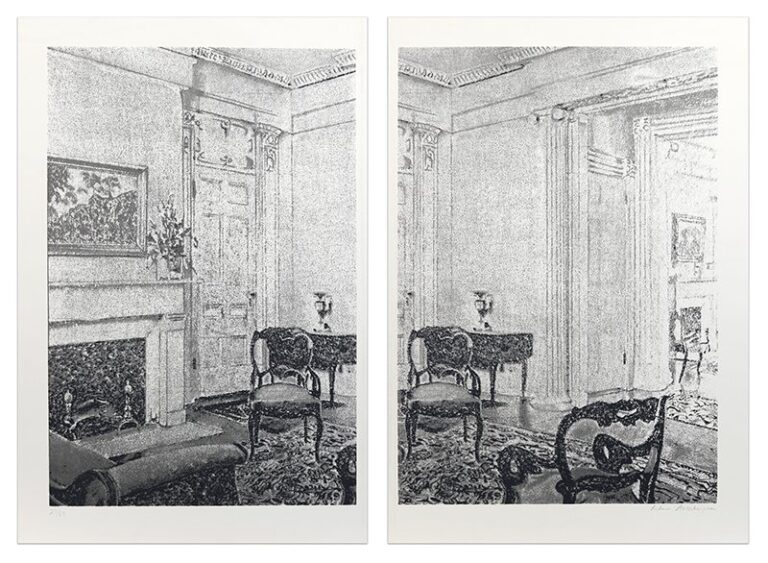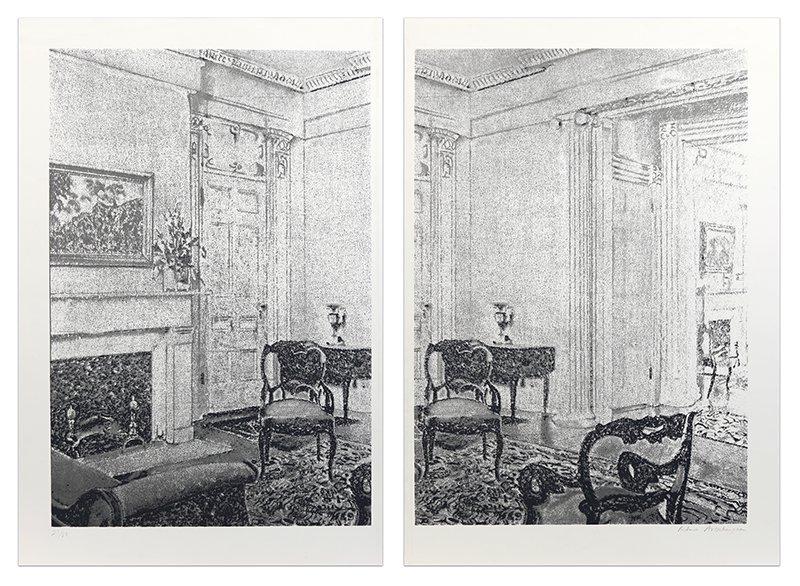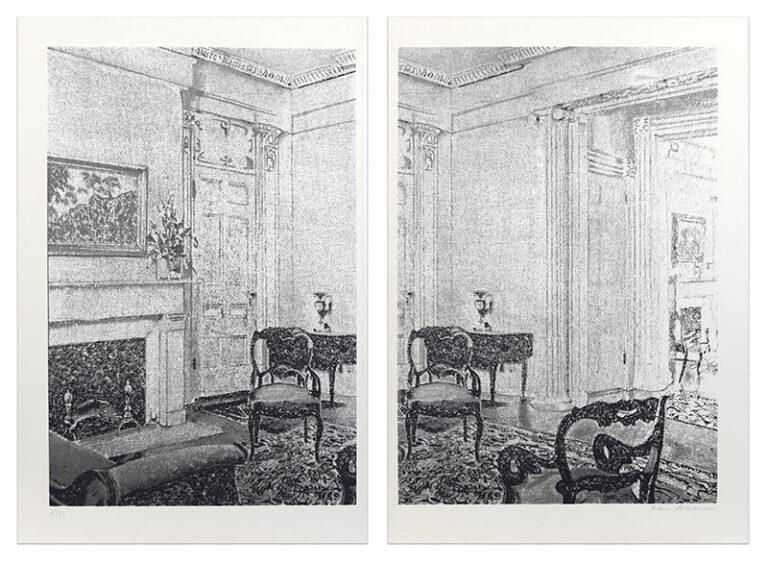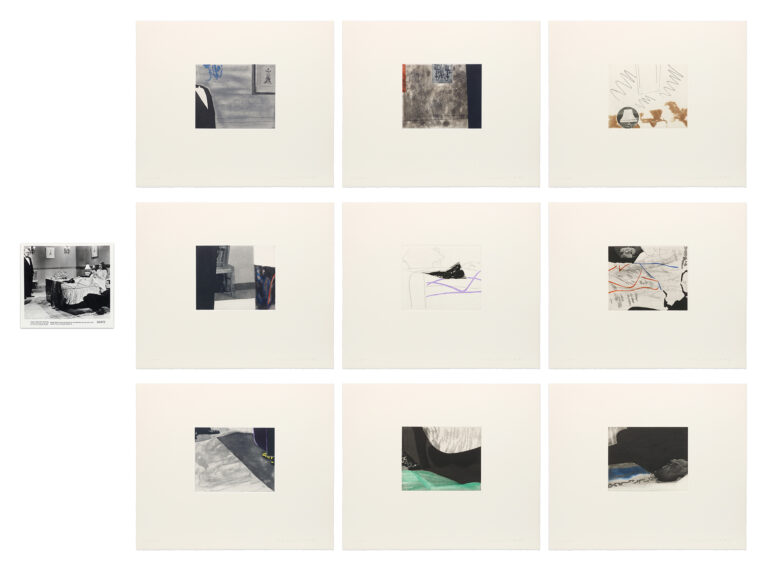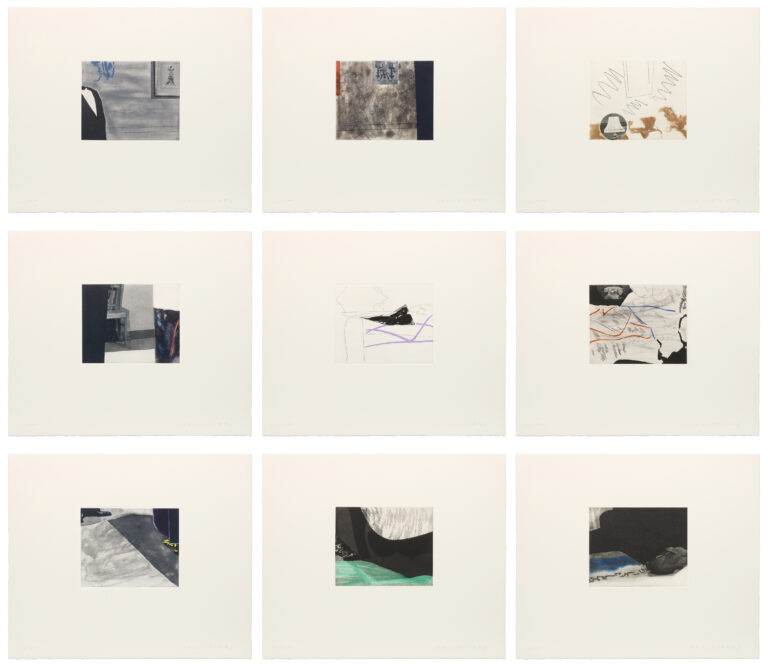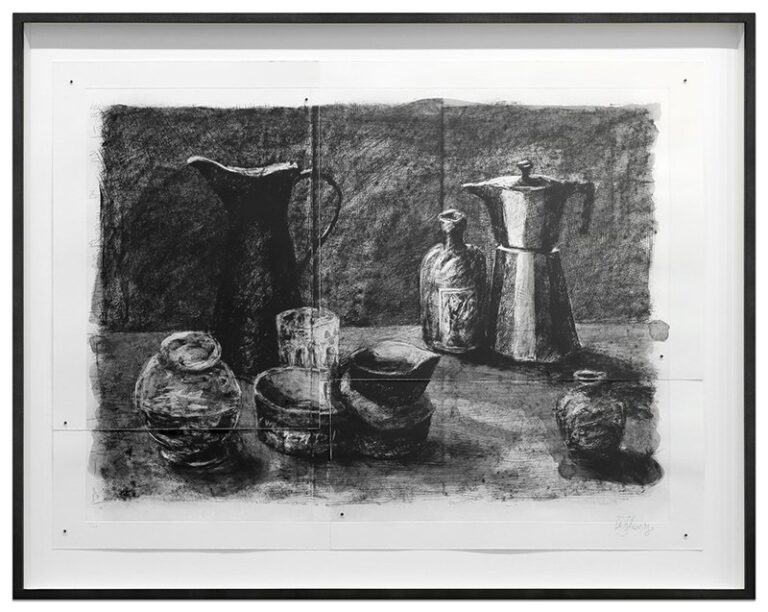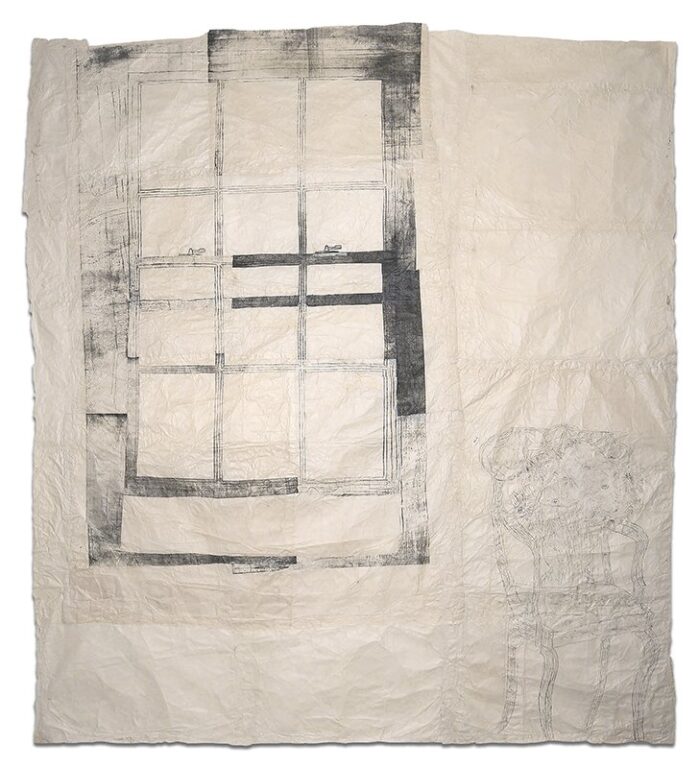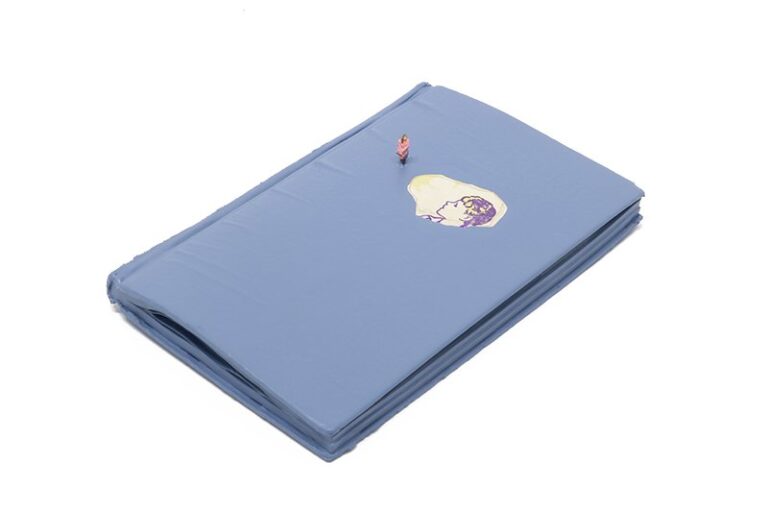Interior
1972
Screenprint in colors on Wove paper on two sheets
Edition 27 of 83, this being a unique variant, altered by the artist
Overall size approximately: 32 3/4 x 44 3/8 inches (83.2 x 112.7 cm)
Signed lower right and numbered lower left in graphite
(Inventory #30890)
Richard Artschwager
Interior
1972
Screenprint in colors on Wove paper on two sheets
Edition 27 of 83, this being a unique variant, altered by the artist
Overall size approximately: 32 3/4 x 44 3/8 inches (83.2 x 112.7 cm)
Signed lower right and numbered lower left in graphite
(Inventory #30890)
